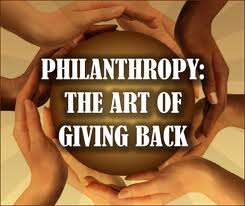 After last weekend’s Easter celebrations, I had a lot of ham leftovers. So, I decided to do what I normally do . . . I went to the store and bought all of the ingredients for split pea soup. This is what my mom did when I was a kid, and this is what I now do as an adult. Unfortunately, this year’s undertaking went horribly wrong, but the good news is that I walked away with a story that all non-profit organizations will appreciate.
After last weekend’s Easter celebrations, I had a lot of ham leftovers. So, I decided to do what I normally do . . . I went to the store and bought all of the ingredients for split pea soup. This is what my mom did when I was a kid, and this is what I now do as an adult. Unfortunately, this year’s undertaking went horribly wrong, but the good news is that I walked away with a story that all non-profit organizations will appreciate.
I worked on this pot of soup all day long on Monday. Split peas, celery, carrot, onion, garlic, bay leaf, salt, pepper, marjoram, and leftover ham from Easter. Boil . . . then simmer . . . then gently heat throughout. Stir, stir, stir some more. Taste, stir, taste, stir . . . you get the idea.
As this process unfolded, I kept retreating to my home office to work on projects for clients. Long story short, I got really wrapped up in something work-related and forgot to stir the soup for an hour-and-a-half. Needless to say, I burned the soup. Here was what I ended up doing between 6:00 pm on Monday night and 11:00 am on Tuesday morning in an attempt to remedy the situation:
- Call Mom and cry . . . then ask for her expert advice.
- Transfer soup from burned pot to new pot.
- Add water.
- Add more spicing.
- Add more onion, celery and carrot.
- Add more peas.
- Add more ham.
- Add more spices.
- Go to Google and search: “I burned my split pea soup.”
- Read lots of crazy internet content about how to fix a pot of burned split pea soup.
- Deep breath . . . add a heaping tablespoon of peanut butter to the soup.
- Cry some more because now I had a pot of burned peanut butter soup.
- Sleep and dream about burned peanut butter (supposed to be split pea soup)
- Wake up to attend a meeting at a local coffee shop. Bringing a mug of my burned soup to the meeting and ask friends to taste it and weigh-in with their opinions.
- Call Mom and brother fromon my way home from the Tuesday morning meeting to beg for any advice they may have been holding back on.
 Let me stop here and bridge this topic over to our work as non-profit and fundraising professionals.
Let me stop here and bridge this topic over to our work as non-profit and fundraising professionals.
As I look back upon my time on the front line, I dealt with a ton of burnt pots of split pea soup. Here are just a few examples:
- Hiring the wrong person to do a job.
- Recruiting the wrong person to help with a fundraising campaign.
- Recruiting the wrong person to serve on the board of directors.
- Asking the wrong board members to serve on the wrong standing committee.
- Investing way too much time cultivating a prospective donor who had no intention of ever making a contribution.
In each of these business examples, I did the same thing as I did with my pot of soup. I kept sinking more time, energy and resources into fixing a situation that just wasn’t fixable.
In the case of making the wrong hire, it was additional meetings, coaching, corrective action plans, and more corrective action plans.
In the case of the fundraising volunteer, it was additional meetings, taking tasks off their plate and doing it myself, and recruiting a co-chair and other volunteers to supplement the work I originally had counted on them to do.
My partner (and the love of my life) is a corporate sales tax guy. He hangs around accountants all day long, and he is constantly telling me:
“Sunk costs are never a consideration!”
As much as it pains me to say, he is right.
 As for my pot of burned pot of split pea soup, my mother and brother convinced me to throw it out and start from scratch on Tuesday morning.
As for my pot of burned pot of split pea soup, my mother and brother convinced me to throw it out and start from scratch on Tuesday morning.
All of those sunk costs kept making the pot of soup bigger and bigger, which is what made throwing three gallons of soup in the trash so difficult. If I had only listened to what my partner is always telling me, there would’ve been a lot less food (and money) going in the garbage.
As it relates to your non-profit organization, it is important to remember that your time is money. This means hiring the right people and recruiting the right volunteers is very important. Failing to do so is the equivalent of making an ever expanding pot of burned split pea soup.
You might as well open your wallet and start burning dollar bills. It is the same thing! And what non-profit organization has enough money laying around to do that?
How do you make sure you are hiring and recruiting the right people? How do you know when to pull the trigger and cut your losses when it comes to volunteers and staff? Please use the comment box below to share stories or best practices because we can all learn from each other.
Here’s to your health!
Erik Anderson
Founder & President, The Healthy Non-Profit LLC
www.thehealthynonprofit.com
erik@thehealthynonprofit.com
http://twitter.com/#!/eanderson847
http://www.facebook.com/eanderson847
http://www.linkedin.com/in/erikanderson847
















